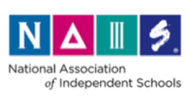
As I mentioned in my state of the school letter and address this winter, beginning in the 2015-2016 school year, the CSS Upper School will implement a Bring Your Own Device Program. Like a 1:1 technology integration program, students will be expected to have access to an electronic device (tablet with a keyboard, chromebook, netbook, or full laptop computer) in each of their classes on a daily basis. Unlike a 1:1 program, students will have the choice to use the type(s) of devices they already own and know how to use.
According to our surveys, almost all students in the Upper School currently have access to a device that fits the basic requirements of the program. Over the course of the year, we have made significant connectivity upgrades in the Upper School building to handle the increased traffic.
This program will allow Upper School students and teachers the flexibility to create and collaborate at a moment’s notice. When students have access to powerful, networked devices in every class, there are no barriers to accessing research databases, digital notes and documents, and collaborative projects. Learning in a “connected” environment is great preparation for the fast-paced and highly-networked academic environments students will encounter in colleges and universities.
General advantages to the BYOD initiative:
- Decreased travel time to/from computer labs
- Decreased computer boot-up time
- Decreased competition for computer labs between classes
- Decreased back-pack weight for students (digital documents and texts)
- Facilitates the teaching of:
- electronic file organization
- electronic communications - video chat, shared docs, IM, email
- evaluation of information
- use of the internet as a research tool
- use of the internet as a collaboration tool
- typing skills
- Encourages modern blogging and use of learning management systems, which can be successful venues for introverted students or students with slower processing speeds
- Facilitates students taking electronic notes (searchable)
- Teaches students to manage digital documents in their classes
- Allows digital assignment submission
- Facilitates student viewing of CSS produced flipped classroom videos
- Gives access to digital tools for student video production
- Ensures consistent access to Google drive
- Aids in the creating of Digital Portfolios - accessible to students, teachers, parents
Device capacities
At the most basic level, student devices need to be able to:
- Connect to the internet wirelessly
- Run apps (either on a hard drive or in the cloud) to create word processing documents, spreadsheets, and presentations
- Login to the Google apps suite
- Capture photos, video, and audio
Below is a range of acceptable general categories of devices listed from least expensive and simplest to most complicated. If you desire specific recommendations, there is a list on the CSS BYOD handbook website or you may email Joe Thomas on the CSS Tech Team.
PLEASE NOTE: With significant advance notice, students can lease chromebooks from CSS for a nominal yearly fee that includes insurance.
- Tablets with external keyboards: limited in the their capacities but meet the basic requirements
- Chromebooks: restricted in their capacity to download and run complicated applications but also meet the minimum standard of BYOD at CSS. Chromebooks are defined as a thin client laptop that is configured with the Chrome operating system (Chrome OS). Because the only software application that Chrome OS can run locally is the Google Chrome browser, a Chromebook is often described as a browser-in-a-box.
- Netbook: smaller notebooks optimized for low weight and low cost - netbooks omit certain features (e.g. the optical drive), have smaller screens and keyboards, and offer reduced computing power when compared to a full-sized laptop.
- Recent Windows and Mac laptops: represent the highest level of memory, processing speed, and power, and therefore the highest level of native graphics, photo/video manipulation. While these devices are beyond the minimum requirements, they are the most flexible and powerful.
Warmly,
Aaron Schubach
Head of School



